Las Vegas Podiatrist Dr. David Biesinger Uses UltraMist Therapy to Treat Diabetic Foot Wounds
People with diabetes often have wounds that won’t heal. Diabetes can damage blood vessels, reducing blood flow to the extremities. This limits the delivery of oxygen and nutrients needed for healing. High blood sugar levels can also impair the immune response, making it harder for the body to fight infections and repair damaged tissue.
At Centennial Foot & Ankle, Las Vegas podiatrist Dr. David Biesinger often recommends UltraMIST therapy for people with diabetes who have foot ulcers and other slow-healing wounds. UltraMIST therapy treats diabetic foot wounds painlessly using acoustic ultrasound waves. This diabetic foot care service increases blood flow, decreases microbes, and promotes the healing process.
What Is UltraMIST Therapy?
People with diabetes are prone to developing foot ulcers, which are wounds on the foot or toes that take a long time to heal. Diabetic foot ulcers typically appear on pressure points like the ball of the foot or the bottom of the big toe. They can range from superficial to deep, potentially involving tendons, bones, and other deep structures. If left untreated, these ulcers can lead to serious infections and, in severe cases, may necessitate amputation.
UltraMIST therapy is a treatment option for diabetic foot ulcers that won’t heal on their own or are painful to treat. The therapy uses low-frequency ultrasound waves to remove dead or infected tissue from the affected area.
Ultrasound energy reaches deep below the skin’s surface to treat the wound from within and increase oxygen, nutrients, and blood flow to the tissue. This therapy promotes healing by using acoustic waves to control inflammation and reduce bacteria. It also increases angiogenesis, which is the formation of new blood vessels from existing ones to promote wound healing.
As SANUWAVE's UltraMIST System is an advanced wound care option, studies have shown that it is more effective in reducing the wound area, decreasing pain, and closing the wound compared to standard wound care procedures.
What to Expect During an UltraMIST Therapy Appointment
UltraMIST therapy is a no-contact, painless treatment that is suitable for people of all ages. Appointments typically follow a five-step process. Here’s what to expect during an appointment:
- The team will remove your old bandages.
- Your wound will be gently washed.
- Spray saline will be misted directly onto your wound while ultrasound waves are emitted through a metal transducer.
- The team will redress your wound.
- You will schedule a follow-up appointment to complete the treatment.
UltraMist therapy sessions last between five and 20 minutes, depending on the size of the wound being treated. Healing times vary as well, but our patients have seen results in as few as two treatments.
Increase the Benefits of UltraMIST Therapy With a Comprehensive Plan to Manage Your Diabetes
While UltraMIST therapy shows ws great promise, it's important to note that it's not a standalone treatment. It should be used as part of a comprehensive wound care plan that includes proper diabetes management, nutrition, off-loading (reducing pressure on the wound), and other standard wound care practices.
Other Types of Wounds Treated by UltraMIST Therapy
In addition to treating diabetic foot ulcers, UltraMIST therapy can also be beneficial for treating:
- Pressure ulcers. Also known as bedsores or decubitus ulcers, pressure ulcers are caused by prolonged pressure on the same area of skin. They are categorized by changes in skin color or texture, swelling, and soreness. Pressure ulcers most commonly occur on bony prominences such as the heels.
- Venous ulcers. These wounds are open sores that can affect any area of the skin but are most common around the ankles and legs. They are caused by poor blood circulation, specifically problems with the veins returning blood from the legs to the heart. Venous ulcers are usually shallow and irregularly shaped with well-defined borders. The surrounding skin may be discolored, hardened, or swollen.
- Surgical wounds. These wounds are intentionally created during surgical procedures and can vary greatly in size, depth, and location depending on the type of surgery. They can become infected if they don’t heal properly on their own.
